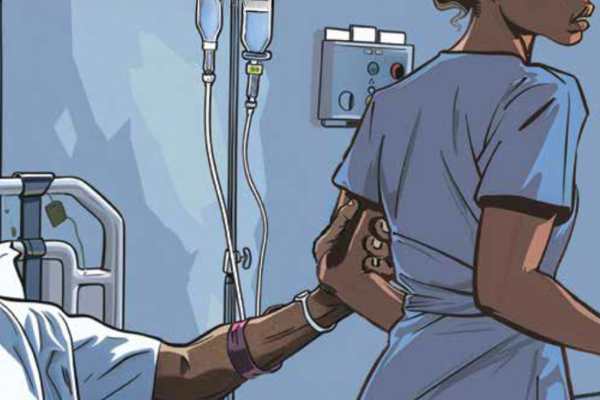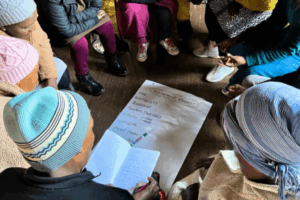Violence and harassment, including gender-based violence, are workplace hazards that must be addressed as part of Occupational Safety and Health (OSH) management. The ILO Convention No. 190 (C190) and Recommendation No. 206 highlight the importance of integrating violence and harassment into OSH measures. Specifically, Article 12 of C190 calls for the adaptation of existing OSH measures and the development of new ones to effectively prevent and respond to these issues.
OSH establishes a system of mutual rights and obligations between workers and employers, emphasizing shared responsibility. It provides detailed preventive strategies, requiring both employers and workers to ensure their own health and safety and that of others.
C190 includes the three fundamental rights of all workers as identified in the OSH approach: The right to participate in decisions that could affect health and safety; the right to know about health and safety matters; the right to refuse work that could affect their own health and safety and that of others.
Working with an OSH framework, we can identify and mitigate risks. A key feature of the OSH framework is a risk assessment which identifies all the possible risks that may threaten the health and safety of workers. Trade unions have a role in conducting risk assessments, as workers in unions are best positioned to identify workplace situations or arrangements that heighten the risk of violence and harassment.
Conducting a risk assessment on workplace violence and harassment
“A workplace risk assessment is a continual, ongoing process – like a film on a loop. It is not a snapshot of a workplace, like an inspection. While inspections verify if control measures are in place, a risk assessment identifies the hazards and determines what measures are needed.”
PSI Practical Guide for Implementing ILO Convention 190 in the Public Sector
Step 1: Identify the hazards
Typical workplace assessments identify risks by observing the environment and consulting with workers. However, assessing risks related to violence and harassment demands a more personal and subjective approach.
Invite workers to share their stories of violence and harassment. These narratives can uncover risk factors and patterns often overlooked.
Ask workers to outline a typical day, from waking up to going to bed, and identify specific moments they feel unsafe or afraid. This helps uncover hidden risks by examining the where, when, why, and how of those feelings.
Step 2: Identify who might be harmed and how
Encourage workers to share their experiences of violence and harassment, whether as victims or witnesses, to understand how different groups are affected. Risks can vary significantly: for instance, women working night shifts may face sexual violence or harassment in unsecured workplaces or while using public transport, whereas men may perceive a higher risk of robbery.
Step 3: Evaluate the risk – decide on control measures
The hazards of violence and harassment often require multifaceted solutions. A practical approach is leveraging employee wellness programs that address physical, psychosocial, and organizational well-being. This holistic framework ensures individual physical and mental health is supported while fostering a positive workplace culture.
Step 4: Assign responsibilities and set timeframes
The ILO guide provides actionable strategies for developing a comprehensive plan to address violence and harassment:
- Implement low-cost, temporary fixes while developing more robust control measures.
- Prioritize long-term solutions for risks that significantly contribute to violence and harassment.
- Focus on high-severity risks requiring immediate attention.
- Provide training for workers on remaining risks and associated control measures.
- Conduct regular checks to ensure the effectiveness and maintenance of control measures.
Step 5: Record, monitor, review, and update
Violence and harassment risks evolve, with new challenges like cyberbullying becoming increasingly prevalent. Regular reviews and updates ensure the risk assessment remains relevant and addresses emerging threats effectively.
Considerations for risk assessments
The “world of work” context
The concept of the “world of work” encompasses all work-related environments and acknowledges that violence and harassment can occur in diverse settings. Risk assessments should be comprehensive, accounting for these varied contexts.
Domestic violence
Employers have a responsibility to address the impacts of domestic violence on workers’ safety, health, and productivity. Risk assessments must include strategies to mitigate these effects within the workplace.
Third-party violence
Policies to prevent and manage third-party violence and harassment should be clear and developed collaboratively with trade unions to ensure they are both effective and inclusive.
RELATED ARTICLES
What workers can demand for a safer workplace
RELATED RESOURCES
- Practical Guide for Implementing ILO Convention 190 in Public Sector Workplaces
- Taking Action on Violence and Harassment against LGBTQI+ Workers (Facilitator Guide)
- Taking Action on Violence and Harassment against LGBTQI+ Workers (Participant Handbook)
- Workplace rights belong to everyone: Negotiating for inclusivity and against discrimination







